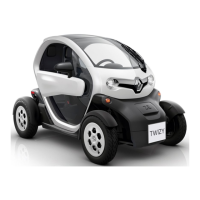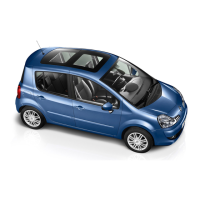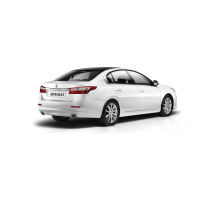
Do you have a question about the Renault TWINGO and is the answer not in the manual?
| Brand | Renault |
|---|---|
| Model | TWINGO |
| Category | Automobile |
| Language | English |
Coded key for ignition, doors, and fuel filler cap; remote control functions.
How to activate and deactivate deadlocking of doors and tailgate.
How to activate and deactivate the RAID system and its operating principle.
Adjusting driving position, seat belts, and proper wearing of seat belts.
Explains pretensioners, force limiters, and airbags as additional restraint systems.
Details about side airbags and curtain airbags, including warnings for seat covers.
Regulations, approved safety devices, and general advice on child restraint systems.
Explains the meaning and operation of various warning and indicator lights on the instrument panel.
Switching on side lights and adjusting instrument panel lighting brightness.
Explains horn, headlight flasher, hazard warning lights, and direction indicators.
Guidelines for the initial running-in period for petrol and diesel engines.
Procedures for starting and stopping the petrol and diesel engines.
How ABS works, its benefits, and operating faults with warning lights.
Explains the system's function and hazard warning lights activation.
How to use the speed limiter function, controls, and indicator lights.
How to use the cruise control function, controls, and driving advice.
Explains the selector lever, gear shift pattern, display, and automatic/manual modes.
Details the controls for automatic climate control, including demisting and air conditioning.
How to read the oil level using the dipstick and exceeding maximum level warnings.
Information on oil change frequency, capacities, engine oil grade, filling, and safety precautions.
How to access and refit the emergency spare wheel, and related warnings.
Step-by-step instructions for changing a vehicle wheel, including safety precautions.
Importance of tyre condition, tread depth, wear warning strips, and tyre safety regulations.
Advice on avoiding sparks, connecting a battery charger, and checking battery charge status.
Instructions for towing the vehicle, including using towing points and ensuring lights and steering are functional.
Troubleshooting guide for common operating faults related to the starter, engine starting, vibration, and coolant.
Location and explanation of vehicle identification plates and their markings.
Details engine types, cubic capacity, fuel type, and spark plug specifications.
Importance of fastening seat belts, even for short journeys and with airbags.
Using appropriate child seats and disconnecting front airbags for rear-facing baby seats.
Instructions for adjusting seat belt height, seatback angle, and headrest height.












